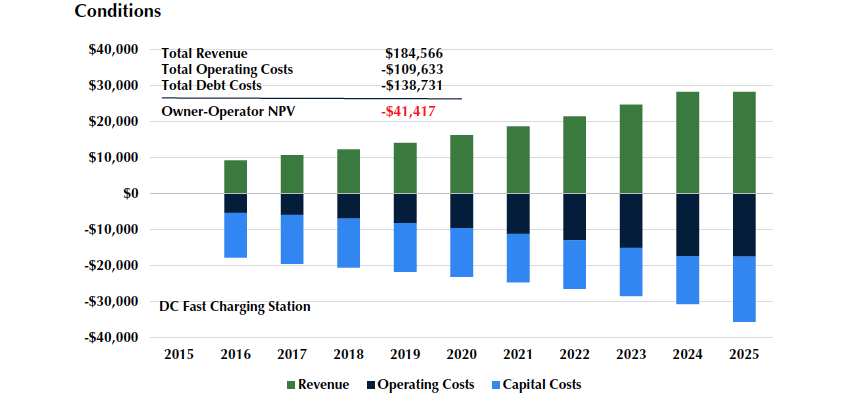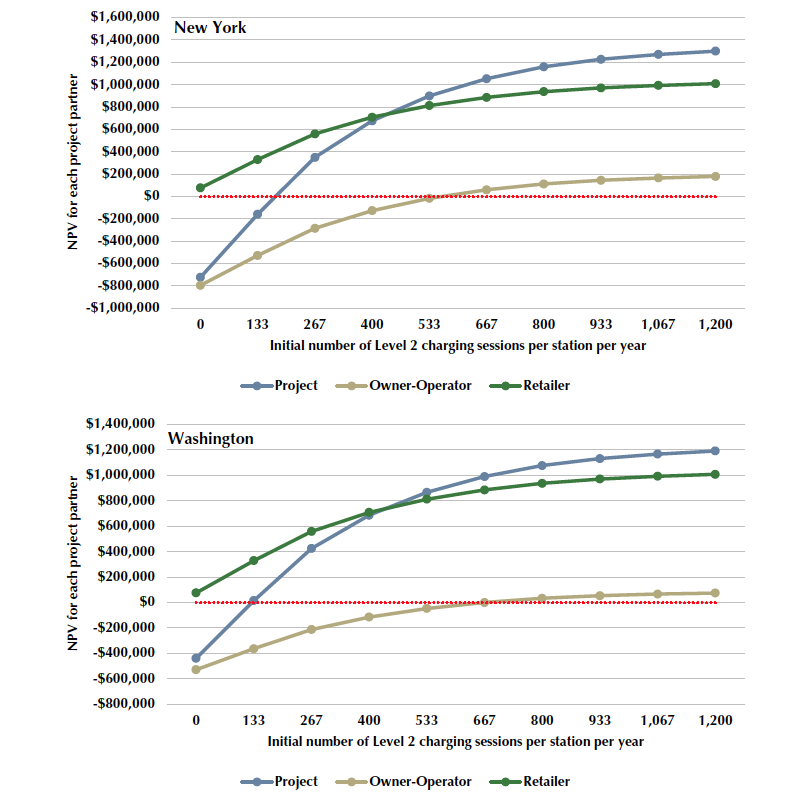Publication
Powering Possibility
This factsheet explores clean hydrogen, a critical commodity in major industrial and chemical processes, from petroleum refining to fertilizer production.

More than 300,000 electric vehicles (EVs) are already on the road in the United States, but to ramp up adoption of this technology, consumers will need more access to charging beyond their home or office.
C2ES has identified business models that, combined with near-term public support, could boost investment in publicly available EV charging and expand the environmental benefits of EVs.
The business models are detailed in a new C2ES publication, Strategic Planning to Implement Publicly Available EV Charging Stations: A Guide for Businesses and Policymakers. The guide draws on research from a two-year initiative in partnership with the National Association of State Energy Officials (NASEO) to explore innovative financing mechanisms aimed at accelerating the deployment of alternative fuel vehicles and fueling infrastructure.

Private investors concerned about high upfront costs and uncertainty about demand for charging services often choose to step back from public charging projects because they are unlikely to earn back their investment in five years or less.
Indirect revenue streams can make a big difference. For example, an automaker and an EV charging station operator could share the revenue generated by additional EV sales that could come from an expansion of charging services. Or a group of retail businesses could co-host a charging site, sharing the costs and attracting new customers.
These and other business models were analyzed using a tool, developed by C2ES and Cadmus Group, that helps investors evaluate the financial viability of publicly available charging station projects.

Even with these business models, some projects may still not be profitable soon enough for investors. So the report recommends near-term public support, such as grants, low-interest loans, and vehicle purchase incentives. Grants help lower initial costs to speed return on investment, and low-interest loans provide access to investment capital. Incentives to buy EVs, like the wide array of policies outlined in a recent report on EV promotion in the 25 largest U.S. cities, can help expand the demand for charging stations.
Publicly available charging not only helps travelers with EVs get where they need to go; it also helps reduce emissions contributing to climate change that affects us all.
As with many new technologies, EV charging will need creative business models and public support to capture the environmental benefits of electric vehicles. With continued public support in the near term, new business models that capture indirect revenue can gradually make publicly available charging projects profitable for private businesses.